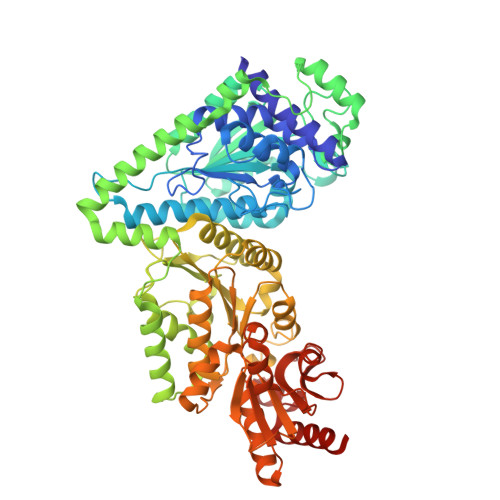Structural basis for antibiotic action of the B 1 antivitamin 2'-methoxy-thiamine.
Rabe von Pappenheim, F., Aldeghi, M., Shome, B., Begley, T., de Groot, B.L., Tittmann, K.(2020) Nat Chem Biol 16: 1237-1245
- PubMed: 32839604
- DOI: https://doi.org/10.1038/s41589-020-0628-4
- Primary Citation of Related Structures:
6TJ8, 6TJ9 - PubMed Abstract:
The natural antivitamin 2'-methoxy-thiamine (MTh) is implicated in the suppression of microbial growth. However, its mode of action and enzyme-selective inhibition mechanism have remained elusive. Intriguingly, MTh inhibits some thiamine diphosphate (ThDP) enzymes, while being coenzymatically active in others. Here we report the strong inhibition of Escherichia coli transketolase activity by MTh and unravel its mode of action and the structural basis thereof. The unique 2'-methoxy group of MTh diphosphate (MThDP) clashes with a canonical glutamate required for cofactor activation in ThDP-dependent enzymes. This glutamate is forced into a stable, anticatalytic low-barrier hydrogen bond with a neighboring glutamate, disrupting cofactor activation. Molecular dynamics simulations of transketolases and other ThDP enzymes identify active-site flexibility and the topology of the cofactor-binding locale as key determinants for enzyme-selective inhibition. Human enzymes either retain enzymatic activity with MThDP or preferentially bind authentic ThDP over MThDP, while core bacterial metabolic enzymes are inhibited, demonstrating therapeutic potential.
Organizational Affiliation:
Department of Molecular Enzymology, G?ttingen Center of Molecular Biosciences, University of G?ttingen, G?ttingen, Germany.



















